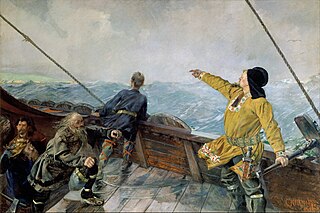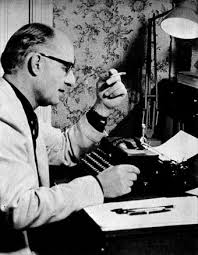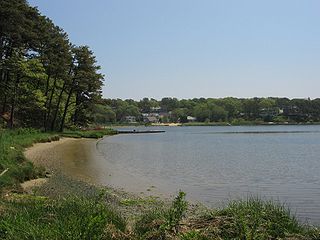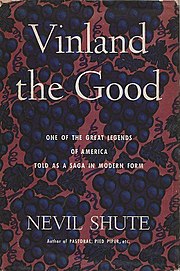
Vinland, Vineland, or Winland was an area of coastal North America explored by Vikings. Leif Eriksson landed there around 1000 AD, nearly five centuries before the voyages of Christopher Columbus and John Cabot. The name appears in the Vinland Sagas, and describes Newfoundland and the Gulf of Saint Lawrence as far as northeastern New Brunswick. Much of the geographical content of the sagas corresponds to present-day knowledge of transatlantic travel and North America.

Erik Thorvaldsson, known as Erik the Red, was a Norse explorer, described in medieval and Icelandic saga sources as having founded the first European settlement in Greenland. Erik most likely earned the epithet "the Red" due to the color of his hair and beard. According to Icelandic sagas, Erik was born in the Jæren district of Rogaland, Norway, as the son of Thorvald Asvaldsson; to which Thorvald would later be banished from Norway, and would sail west to Iceland with Erik and his family. During Erik's life in Iceland, he married Þjódhild Jorundsdottir and would have four children, with one of Erik's sons being the well-known Icelandic explorer Leif Erikson. Around the year of 982, Erik was exiled from Iceland for three years, during which time he explored Greenland, eventually culminating in his founding of the first successful European settlement on the island. Erik would later die there around 1003 CE during a winter epidemic.

Leif Erikson, also known as Leif the Lucky, was a Norse explorer who is thought to have been the first European to set foot on continental America, approximately half a millennium before Christopher Columbus. According to the sagas of Icelanders, he established a Norse settlement at Vinland, which is usually interpreted as being coastal North America. There is ongoing speculation that the settlement made by Leif and his crew corresponds to the remains of a Norse settlement found in Newfoundland, Canada, called L'Anse aux Meadows, which was occupied approximately 1,000 years ago.

Freydís Eiríksdóttir was an Icelandic woman said to be the daughter of Erik the Red, who figured prominently in the Norse exploration of North America as an early colonist of Vinland, while her brother, Leif Erikson, is credited in early histories of the region with the first European contact. The medieval and primary sources that mention Freydís are the two Vinland sagas: the Saga of the Greenlanders and the Saga of Erik the Red. The two sagas offer differing accounts, though Freydís is portrayed in both as a strong woman.
Gudrid Thorbjarnardóttir was an Icelandic explorer, born at Laugarbrekka in Snæfellsnes, Iceland.

The Norse exploration of North America began in the late 10th century, when Norsemen explored areas of the North Atlantic colonizing Greenland and creating a short term settlement near the northern tip of Newfoundland. This is known now as L'Anse aux Meadows where the remains of buildings were found in 1960 dating to approximately 1,000 years ago. This discovery helped reignite archaeological exploration for the Norse in the North Atlantic. This single settlement, located on the island of Newfoundland and not on the North American mainland, was abruptly abandoned.

The Saga of Erik the Red, in Old Norse: Eiríks saga rauða, is an Icelandic saga on the Norse exploration of North America. The original saga is thought to have been written in the 13th century. It is preserved in somewhat different versions in two manuscripts: Hauksbók and Skálholtsbók.

Skræling is the name the Norse Greenlanders used for the peoples they encountered in North America. In surviving sources, it is first applied to the Thule people, the proto-Inuit group with whom the Norse coexisted in Greenland after about the 13th century. In the sagas, it is also used for the peoples of the region known as Vinland whom the Norse encountered and fought during their expeditions there in the early 11th century.

Henry Treece was a British poet and writer who also worked as a teacher and editor. He wrote a range of works but is mostly remembered as a writer of children's historical novels.

Thorvald Eiriksson was the son of Erik the Red and brother of Leif Erikson. The only Medieval Period source material available regarding Thorvald Eiriksson are the two Vinland sagas; the Greenland Saga and the Saga of Erik the Red. Although differing in various detail, according to both sagas Thorvald was part of an expedition for the exploration of Vinland and became the first European to die in North America outside of Greenland.

Thorfinn Karlsefni Thórdarson was an Icelandic explorer. Around the year 1010, he followed Leif Eriksson's route to Vinland in a short-lived attempt to establish a permanent settlement there with his wife Gudrid Thorbjarnardóttir and their followers.

Leif Erikson Day is an annual observance that occurs on October 9. It honors Leif Erikson, the Norse explorer who, in approximately 1000, led the first Europeans believed to have set foot on the continent of North America.

The Vinland Sagas are two Icelandic texts written independently of each other in the early 13th century—The Saga of the Greenlanders and The Saga of Erik the Red. The sagas were written down between 1220 and 1280 and describe events occurring around 970–1030.

Grœnlendinga saga is one of the sagas of Icelanders. Like the Saga of Erik the Red, it is one of the two main sources on the Norse colonization of North America. The saga recounts events that purportedly happened around 1000 and is preserved only in the late 14th century Flateyjarbók manuscript.

Follins Pond is a brackish lake located on Cape Cod, separating the towns of Dennis, Massachusetts, and Yarmouth, Massachusetts. The lake is connected to Nantucket Sound via the Bass River.

An Old Captivity is a novel by British author Nevil Shute. It was first published in the UK in 1940 by William Heinemann.

Vinland Saga is a Japanese historical manga series written and illustrated by Makoto Yukimura. The series is published by Kodansha, and was first serialized in the boys-targeted manga magazine Weekly Shōnen Magazine before moving to the monthly manga magazine Monthly Afternoon, aimed at young adult men. As of June 2023, its chapters have been collected in 27 tankōbon volumes. Vinland Saga has been licensed for English-language publication by Kodansha USA. The story is a dramatization of the story of Thorfinn Karlsefni and his expedition to find Vinland, with the majority of the story covering his fictional counterpart's transition from a bloodthirsty, revenge-filled teenager into a pacifistic young man; juxtaposed against this is the rise to power of King Canute, the journey of his own counterpart directly contrasting with that of Thorfinn's.
Thorstein Eiriksson was the third and youngest son of Erik the Red.

L'Anse aux Meadows is an archaeological site, first excavated in the 1960s, of a Norse settlement dating to approximately 1,000 years ago. The site is located on the northernmost tip of the island of Newfoundland in the Canadian province of Newfoundland and Labrador near St. Anthony.

Straumfjörður (Icelandic), or Straumfjǫrðr, sometimes anglicised to Straumsfjordr, Straumfjordr, Straumsfjord or Straumfjord, is according to the Sagas of Icelanders a fjord in Vinland where Thorfinn Karlsefni set up a temporary settlement. It is described in the Saga of Erik the Red, but not in the Greenland saga. Its name translates to "Current-fjord", "Stream-fjord" or "Tide-fjord".












